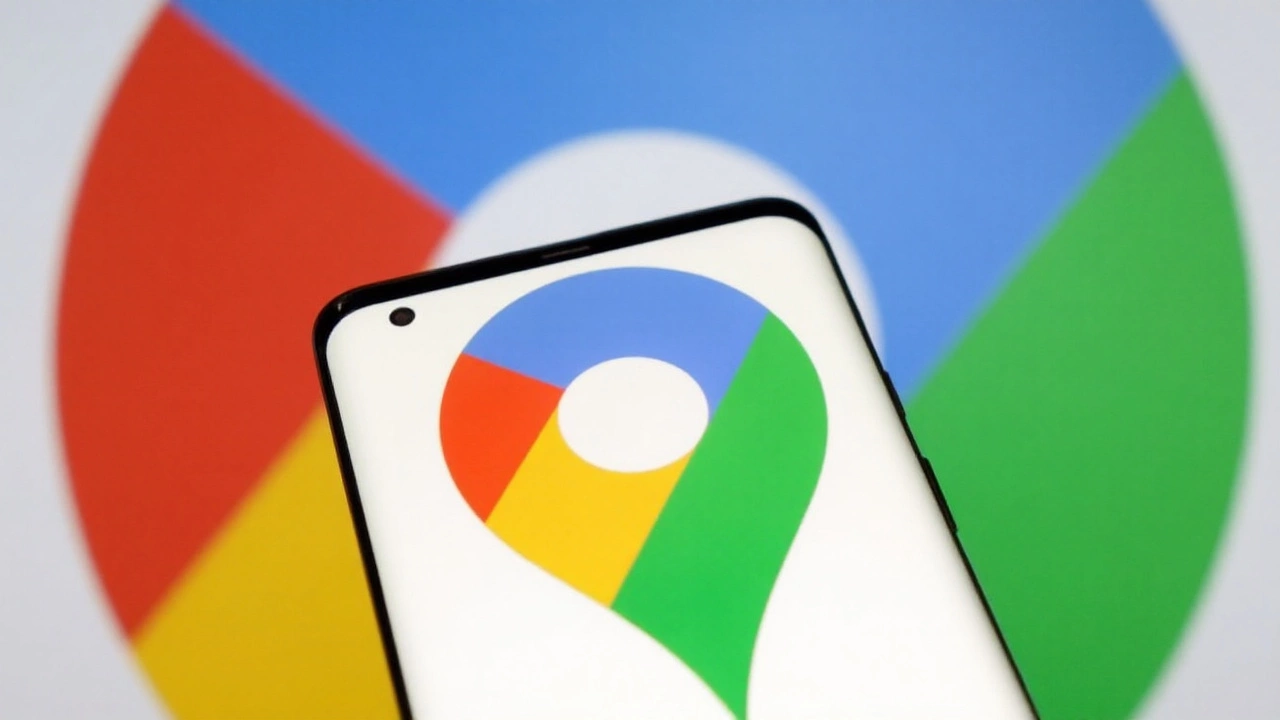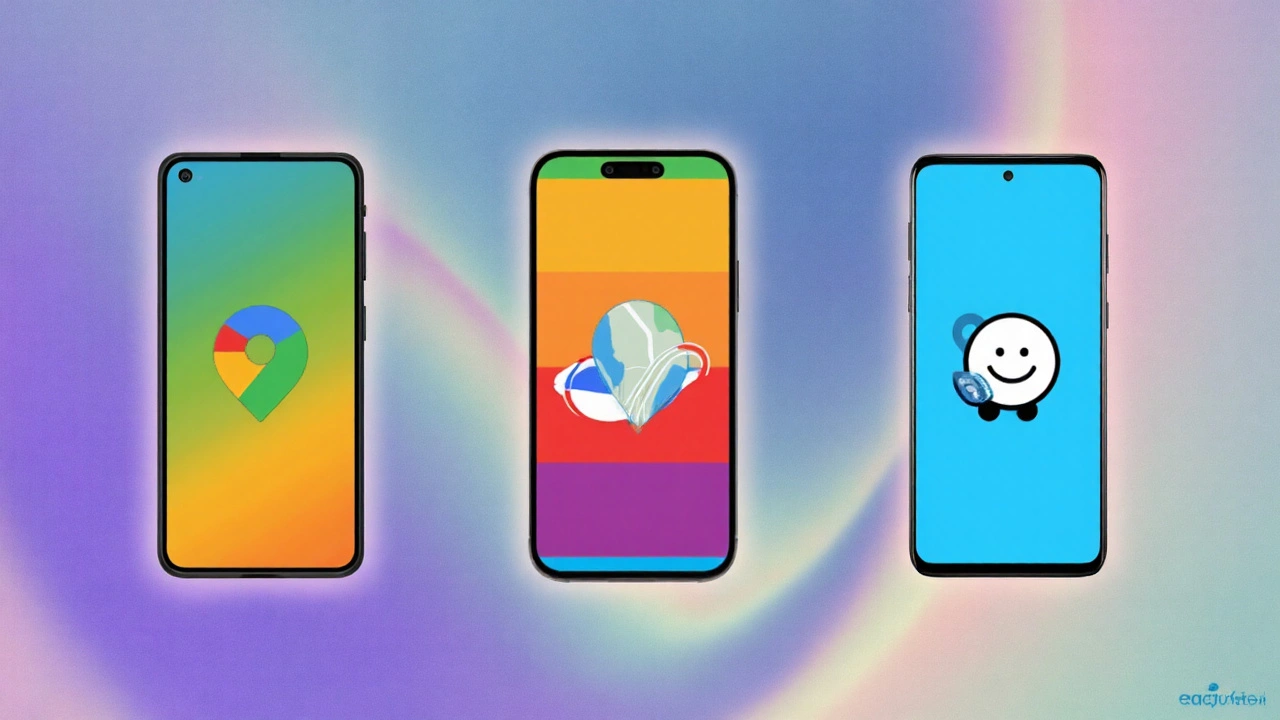On a 600-mile drive, one app kept me out of a 40-minute jam, another told me where to park, and a third vanished from contention before lunch. The navigation wars aren’t about pretty maps anymore. They’re about data density, rerouting speed, and whether your app can still guide you when your phone drops to one nervous bar of signal.
Three apps dominate the market: Google Maps, Waze, and Apple Maps. They all promise the same thing—get there fast—but they go about it very differently. I ran them side by side on CarPlay across highways, city cores, and rural stretches to see which one actually helps you avoid trouble, not just see it after the fact.
The results weren’t close in some areas. If you drive often, there’s a good chance you’re already using a hybrid approach without naming it. Plan with the one that knows everything. Navigate with the one that sees everything. Ignore the one that still can’t find half the places outside a handful of flagship cities.
How the 600-mile test was run
The route mixed big-city traffic, toll roads, backroads, and border crossings. I ran two apps in split view on CarPlay and kept the third ready to swap in. Each app had the latest updates. I set realistic driver preferences—avoid ferries, allow tolls, show speed limits, and alert for hazards. I tested day and night, weekday and weekend, and made sure to drive through areas with weak coverage to see which apps go blind without data.
Apple Maps fell behind early outside North America. In multiple European towns, recent businesses didn’t exist, categories were thin, and some POIs were in the wrong spots by a block or two. Turn-by-turn worked fine in cities with Apple’s enhanced detail, but step out of those zones and the gaps showed up fast. Apple now supports offline maps on iPhone, which helps if you already know where you’re going, but the underlying place data still isn’t strong enough in many regions to trust it for discovery.
That left the real contest: Google Maps vs Waze. Both ran smoothly on CarPlay and stayed stable over long stretches. They also reflect two different philosophies. Google is a research assistant that can navigate. Waze is a traffic radar that happens to have a map.
To keep it fair, I used the same stops across apps—fuel, lunch, coffee, detours, and one late-night hotel change. I also evaluated voice guidance clarity, speed limit accuracy, lane instructions at complex interchanges, and how quickly each app reacted to sudden changes like lane closures and accidents.

Where each app won and lost
Google Maps is the most complete tool if you’re planning a trip. It shines before you even start the car. Its place database is deeper, with photos, reviews, peak-visit times, accessibility notes, and opening hours that are usually up to date. Search is forgiving—you can misspell a café or type “quiet coffee near me open now” and still find a good spot. For long trips, offline maps are a safety net. You can download entire regions, keep routing, and even search for some places without signal. In remote stretches, this is the difference between confidence and guesswork.
On the road, Google’s routing is conservative but sensible. It avoids weird cut-throughs, favors major roads, and doesn’t panic when traffic pulses. When incidents pop up, Google now folds in more reports from drivers, and the trend line is clear: more Waze-like signals are creeping into Maps. But rerouting speed still trails Waze in heavy traffic. Google often waits to confirm a new slowdown before offering a change. That steadiness is comforting for families or road-trippers who don’t want constant turn changes. It’s less helpful when a crash shuts a lane and the delay jumps minute by minute.
Where Google scores daily-driver points is quality-of-life: save your parking spot, add stops easily, reorder them, and get reliable ETAs. Fuel and charging stops are neatly integrated. If you set your engine type, Maps suggests realistic refueling options, and EV drivers can route around charger types and speeds with more confidence than most competitors. Lane guidance is clear at big interchanges, and voice directions avoid chatter—just enough info, not too much.
Waze lives for the unpredictable. The app treats traffic like a tactical game. Reports flow in constantly—potholes, debris, stalled vehicles, hidden cruisers, closed lanes, speed cameras, car-on-shoulder, fog. If drivers ahead of you slow and start logging hazards, Waze notices and reacts. Reroutes come fast and often, sometimes shaving minutes before Google even flags a slowdown. In the 600-mile test, Waze steered me off a highway ahead of a fresh crash, then back on two exits later, bypassing a backup that Maps estimated at 35 minutes.
That speed comes from network effects. The more people using Waze in your area, the better it gets, which attracts more people, and so on. It also comes from incentives. Waze gamifies driving: points, badges, levels, editable avatars, and a stats page that turns your commute into a streak. It sounds gimmicky, but it keeps the reports flowing. If you’ve ever wondered why Waze knows about a ladder in lane three a minute after it falls, this is why.
Waze’s interface is tuned for the real world. Overspeed alerts are obvious without being shrill. Lane guidance is crisp. Directions are simplified at complex splits so you don’t second-guess the exit. The app’s traffic forecast feature lets you scrub a timeline to see how a route behaves on different days and hours, which is handy if you’re deciding whether to leave at 6:20 or 6:50.
But Waze isn’t perfect. It needs a data connection. Lose signal for long and you’re relying on cached segments and luck. Its place database is thinner than Google’s, and the search feels fussier with names and categories. For EVs, Waze can show chargers, but full-on EV route planning is basic compared to Google’s best setups. And because Waze is aggressive, it can propose detours that shave two minutes but add complexity. If you don’t like last-second turns on local streets, you might prefer Google’s calmer approach.
Audio is another difference. Waze talks more—hazard alerts, patrol reports, vehicles stopped ahead. That’s the point, but it raises cognitive load if you already have kids in the back and a podcast playing. You can trim alerts in settings and set them to “visual only,” but then you lose the advantage of community intel. Battery drain and data use are also higher on Waze during rush-hour conditions because it’s constantly exchanging live reports.
Apple Maps sits between these philosophies but lags globally. In cities where Apple has rolled out its richer map detail—cleaner building outlines, clearer lanes, better land cover—it feels modern. Voice prompts are concise. Junction views are helpful. Speed limit alerts are sensible. On iPhone, Apple added offline maps, which is a real step up for rural drives. But the core weakness remains: outside Apple’s strongest markets, place coverage is incomplete, business info is sparse, and some data is outdated. When I needed a specific rural fuel station, Apple listed two that closed years ago and missed a new one entirely.
For fuel and charging stops, Apple’s feature list looks reasonable, but the execution trails Google. In practice, it suggests fewer appropriate stations and doesn’t adjust as well when plans change mid-route. EV routing support also depends on compatible setups and feels limited. You can get from A to B just fine in Apple Maps, especially in the U.S. and Canada, but if your trip depends on accurate POIs and flexible detours, it’s a riskier bet abroad.
Transit and walking tilt things back slightly toward Google and Apple. Waze doesn’t do transit or pedestrian navigation. Google’s transit guidance is broad and reliable in many countries, with live departures where available. Apple’s transit is clean and easy to read in supported cities, and its walking directions shine in detailed urban areas. But this test focused on driving, and that’s where Waze and Google leave Apple behind.
Voice controls matter more than people think, especially in traffic. On iPhone, both Google Maps and Waze work with Siri Shortcuts for quick commands like starting your commute or routing home. In-car, both play nicely with CarPlay. Google’s big advantage is search with natural language. You can be vague and still get what you need. Waze is pickier, which pushes you to tap more unless you know the exact spot. Apple’s voice handling makes sense if you live in its world—good dictation, clean prompts—but you bump into the same coverage limits when your query gets specific.
Privacy is a talking point for all three. Apple stresses on-device processing and limiting what it collects. Google and Waze (owned by Google) make heavy use of aggregated location data to improve routing and traffic predictions. In Waze, you can go invisible and limit what other drivers see, and you can hide your username on the road. For most people, the practical difference is simple: if you want the most aggressive, real-time rerouting, you’re trading more data for that speed.
A quick note for EV drivers: This is where details matter. Google’s EV routing is the most mature across a range of vehicles and charger networks, especially if your car integrates route planning with Maps. It can prioritize charger types and factor station speeds, and it deals better with mid-journey changes. Apple’s EV routing works in specific setups and is improving, but it didn’t match Google’s flexibility on my test routes. Waze can show chargers and help you find stations, but it’s not a full EV route planner.
International travel sealed the verdict. Head into patchy-signal territory and Google’s offline maps just keep working—turns, searches for saved places, and reasonable rerouting on known roads. Waze drops to basics or waits for data. Apple’s offline feature helps, but if the place you need isn’t in the database or is outdated, the best offline map in the world won’t fix the wrong destination.
The most practical strategy blends the strengths of both leaders. Here’s what worked best on the 600-mile test and in daily use after:
- Plan with Google, drive with Waze. Use Google to research, pick stops, and download offline regions. Switch to Waze when you start rolling to catch live hazards and get faster reroutes.
- Set your vehicle type. In Google, choose gas, diesel, hybrid, or EV. In Waze, pick your vehicle profile and adjust road preferences to avoid crazy shortcuts.
- Trim Waze alerts. Keep crucial ones—accidents, objects on road, closed lanes, speed cameras. Mute the rest or set them to visual to cut chatter.
- Save your key spots in Google. Hotels, charging hubs, reliable fuel stations, late-night food. If your signal dies, you can still navigate to them offline.
- Download offline maps before crossing borders. Even a few hundred megabytes can cover a region and save a trip.
- Check traffic one week ahead in Waze. The timeline shows when jams typically spike on your route so you can leave earlier and skip the worst stretch.
There’s a bigger industry story behind these results. Google owns Waze and has been pulling more community-style data into Google Maps while keeping Waze as the fast, driver-first option. That keeps both audiences happy: planners and power commuters. Apple keeps improving steadily, and in its best cities, the experience is pleasant and polished. But scale wins in mapping, and Google plus Waze have a decade head start on global place data and real-time traffic signals.
If you drive mostly in a U.S. or Canadian metro and rarely leave, Apple Maps may be perfectly fine. If you travel, cross borders, or thread rush-hour traffic, Google and Waze together are hard to beat. One gets you ready. The other gets you through.
